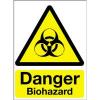Hi All
i just have a query regarding the counting of micro plates and how to get a count from too different plate dilutions, does one simply average two dilution counts? or is there a method to be used.
For example: a dil of 10(-1) = value of 15 colonies and a dil of 10(-2) of 1, does one simply add the 150 and 200 to get 175cfu/g?
And if your second dilution is 0 colonies, is this dilution still taken into account or does one just take thego with the first dilutions colony count into account?
Thanks B x
- Home
- Sponsors
- Forums
- Members ˅
- Resources ˅
- Files
- FAQ ˅
- Jobs
-
Webinars ˅
- Upcoming Food Safety Fridays
- Recorded Food Safety Fridays
- Upcoming Hot Topics from Sponsors
- Recorded Hot Topics from Sponsors
- Food Safety Live 2013
- Food Safety Live 2014
- Food Safety Live 2015
- Food Safety Live 2016
- Food Safety Live 2017
- Food Safety Live 2018
- Food Safety Live 2019
- Food Safety Live 2020
- Food Safety Live 2021
- Training ˅
- Links
- Store ˅
- More
















